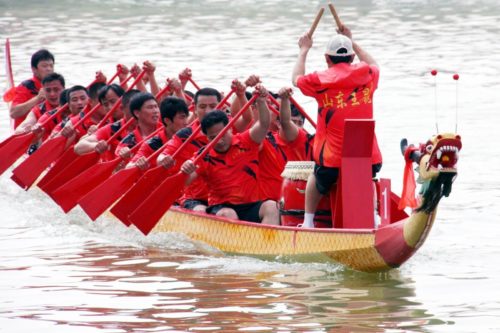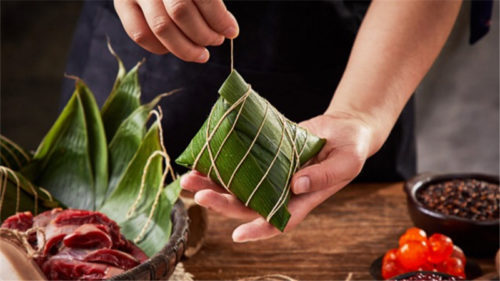Unwrapping zongzi, the traditional Dragon Boat Festival food
The traditional Dragon Boat Festival snack highlights the diversity — and rivalries — of regional cuisines in Taiwan. Our correspondent in Taipei digs in.
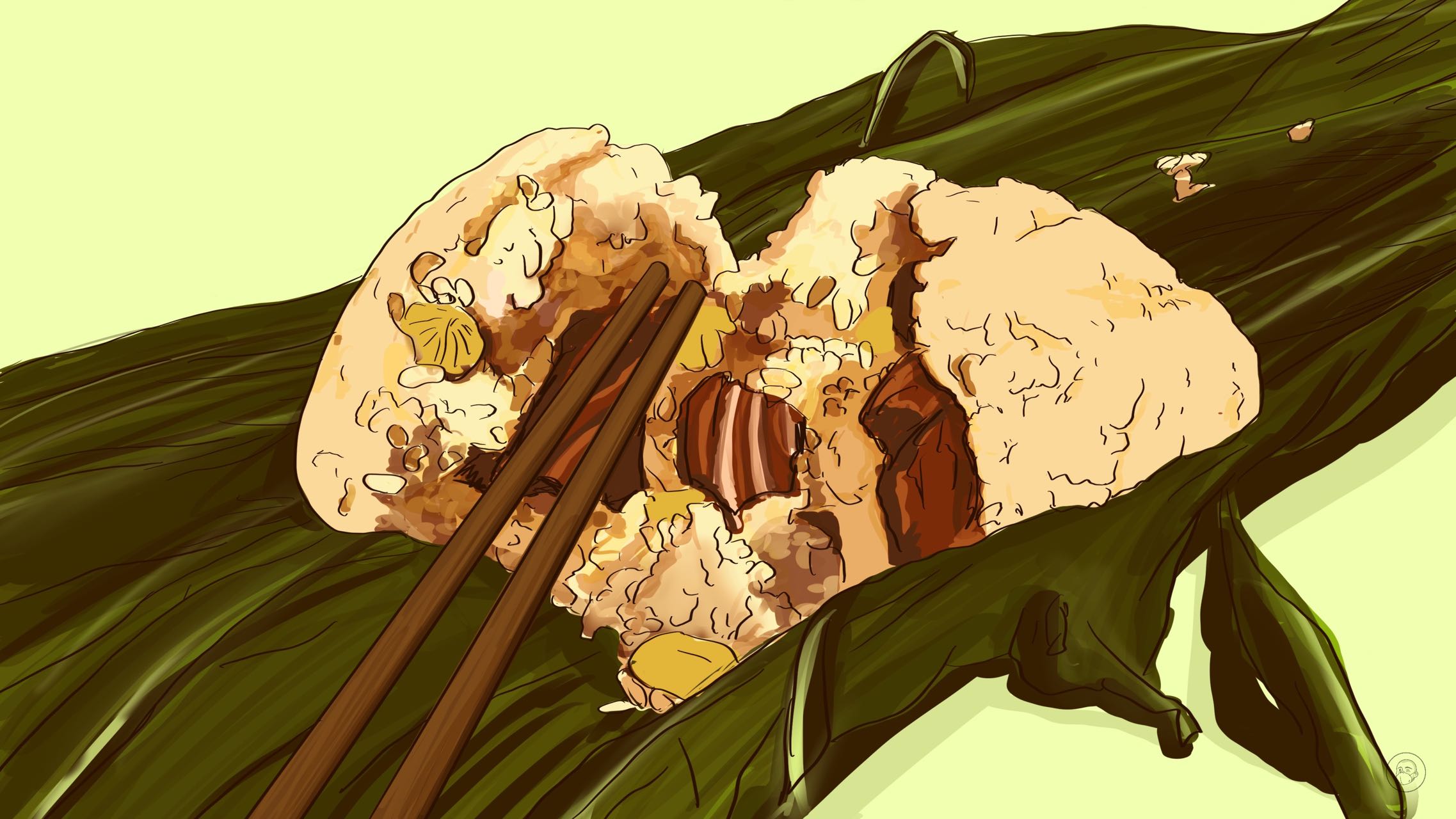
With COVID cases inching up in Taiwan, food markets, malls, and street vendors across the self-ruled island have been eerily quiet as a growing number of residents opt to stay home. But one commodity helping to increase footfall is zòngzi 粽子, a classic Chinese snack that’s tied to a special event.
In its most classic form, zongzi is a glutinous rice dumpling, stuffed with either sweet or savory fillings and wrapped in large, flat bamboo leaves. Although a timeless dish in China, zongzi are traditionally eaten during the Dragon Boat Festival (端午节 duānwǔjié), celebrated on June 3 this year. This past week, these popular rice dumplings have appeared in many food establishments, and were snatched up at speed.
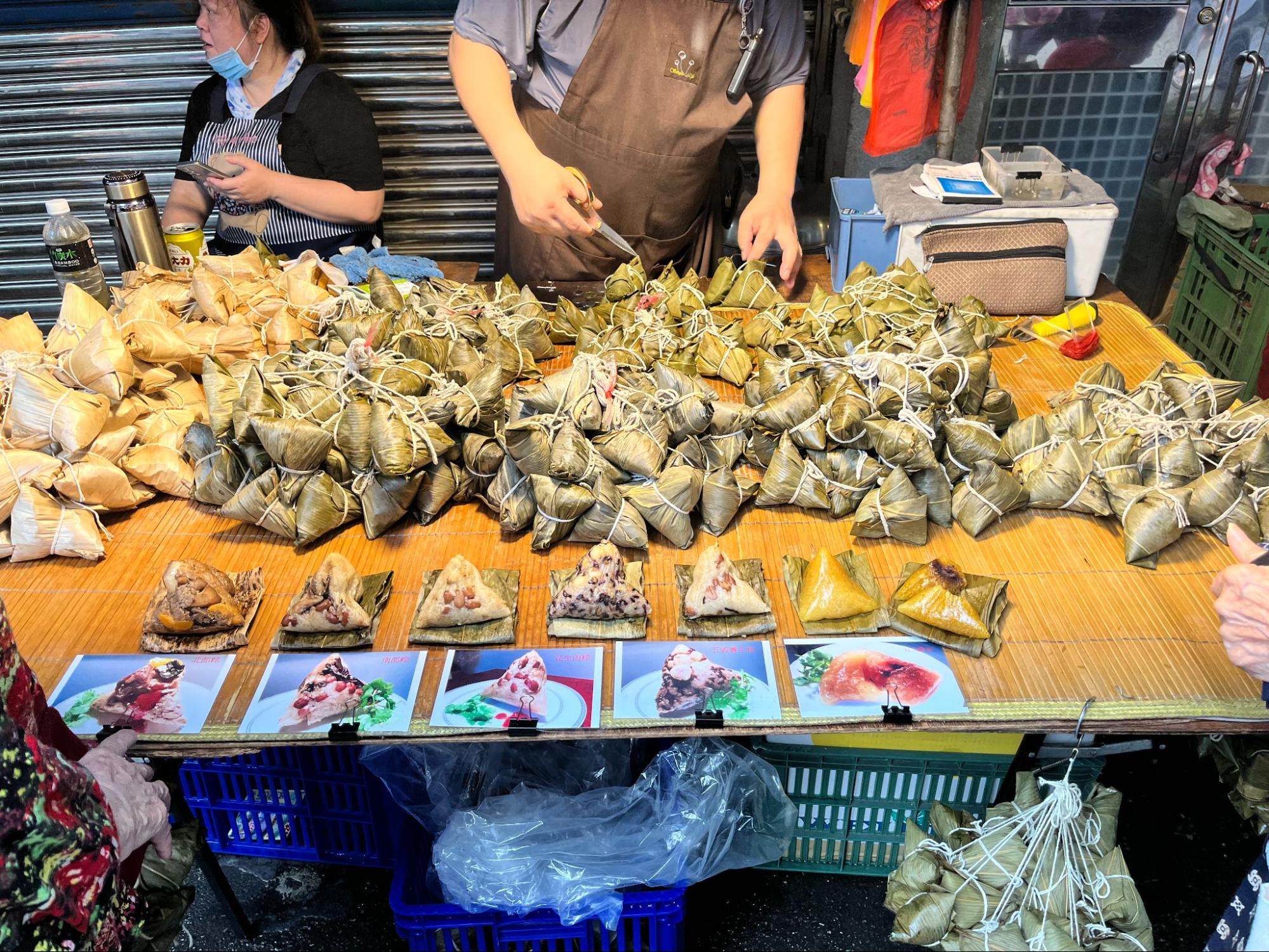
Legend has it that when the state of Qin defeated the Chu in 278 BC, the Chu poet and politician Qū Yuán 屈原 was so overcome with grief that he drowned himself in the Miluo river. Local villagers rushed out in their boats to rescue him but were unsuccessful, so they threw parcels of rice wrapped in bamboo leaves into the river as an offering to his spirit and to prevent the fish from eating his body, ensuring his safe passage into the afterlife. These rudimentary rice parcels eventually evolved into the tradition of eating the celebrated zongzi seen today, 2300 years later.
North vs. south
While zongzi in northern Taiwan and southern Taiwan both hold the notable tetrahedral shape and are wrapped in large flat bamboo or osmanthus leaves (their greatest difference comes down to the consistency of the rice), southern zongzi tend to be stickier because they are boiled, rather than steamed. They are stuffed with marinated fillings such as shiitake mushrooms, pork, and peanuts, and typically served with sauces and toppings such as crushed peanuts and sweet soy sauce pastes.

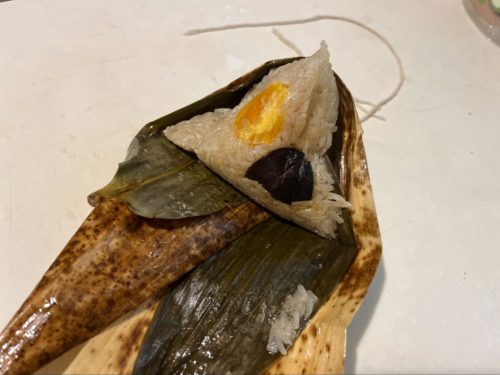
The rice of northern zongzi is also sticky, but the grains remain more intact than their southern counterparts. Before wrapping, the rice is fried and seasoned until partially cooked, resulting in a dark, oily, and complex flavor profile. Savory varieties are often stuffed with mushrooms, dried shrimp, pork, salted egg yolk, and chestnuts, while sweet varieties include red bean, red dates, sweet chickpeas, and cranberries. The wrapped zongzi is then steamed, and when served warm exudes the soft fragrance of the leaves.
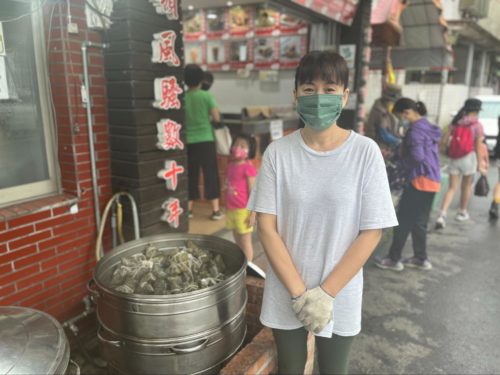
While it is possible to acquire both southern and northern zongzi in all areas of Taiwan, loyalty to regional specialties runs deep. While southerners jibe that northern zongzi taste too similar to oily rice, only tied up in a leaf wrapper, northerners complain the southern style is too sticky. A more neutral critic might observe that the northern zongzi could benefit from a sauce or topping.
At a market in Shenkeng, a town southeast of Taipei, a university student from Chiayi in the south explained that he had routinely traveled back north specifically to visit the store his family buys zongzi from. This year, the student and his parents walked out of the shop with a variety of twenty rice dumplings. Meanwhile, a woman at Taipei’s Nanmen market insisted that to experience the true southern zongzi, you have to go to an establishment in her hometown, Tainan. Buying a southern style zongzi in Taipei “just isn’t the same,” she said.
Huzhou zongzi
Equally popular, Húzhōu zòng (湖州粽) are slightly larger and take on an elongated tetrahedral shape. Originating from China’s Zhejiang province, the Huzhou style is known for its fatty pork filling or sweet red bean variations. Savory Huzhou zongzi are rich and dark brown in color as the rice is marinated in soy sauce before wrapping. Once steamed, the fatty meat melts into the seasoned rice, giving rise to a rich and succulent flavor. Nanmen market in Taipei has a number of long-standing Huzhou style vendors selling freshly steamed as well as frozen zongzi for bulk purchases.
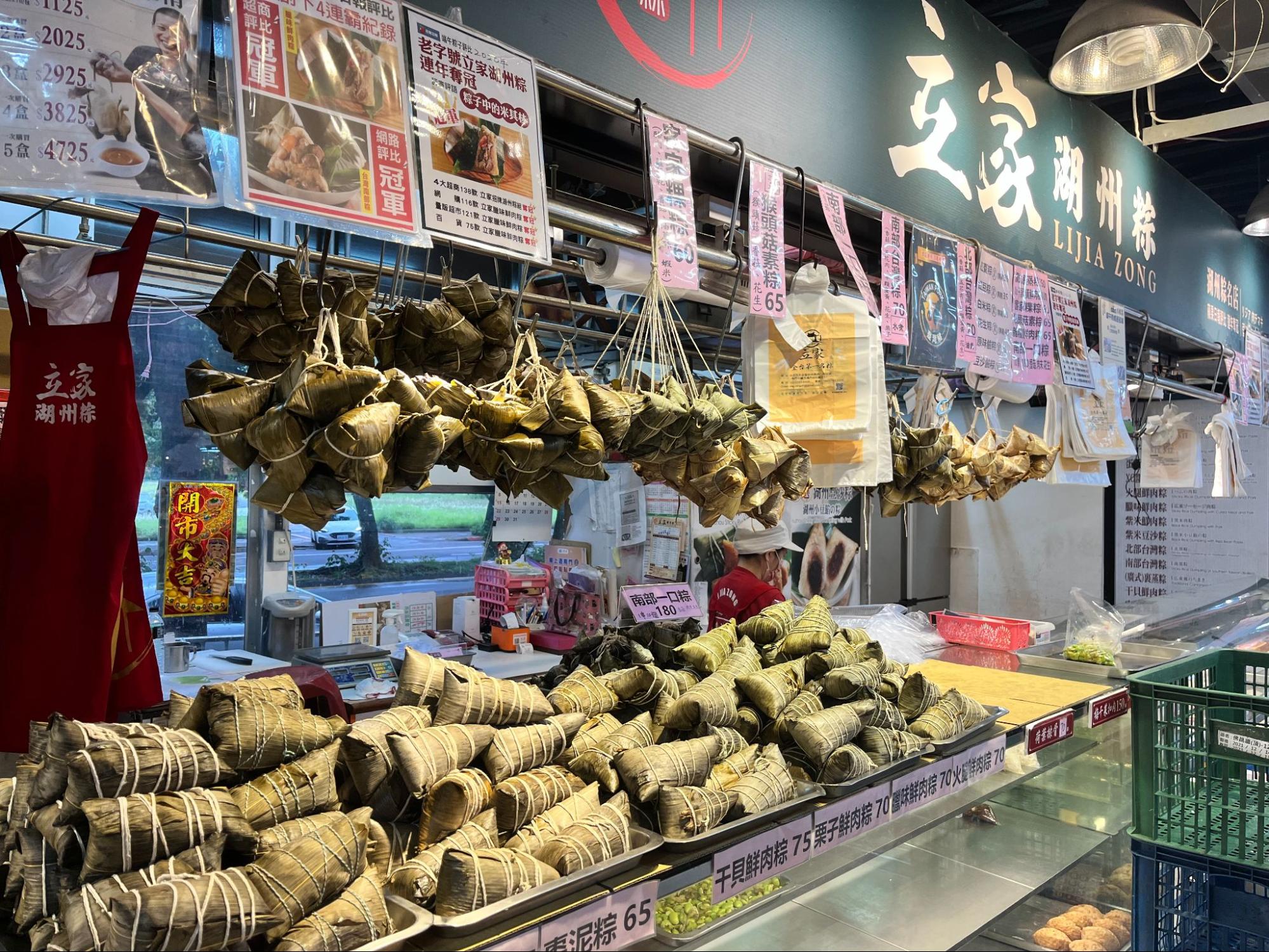
Hakka zongzi
Smooth and light, Hakka zongzi are made with glutinous rice flour and pounded rice. The fillings typically include preserved radish, pork, squid, tofu, and mushrooms. These can be enjoyed warm or chilled, as the rice wrapper has an elastic texture (known by locals as “Q”).

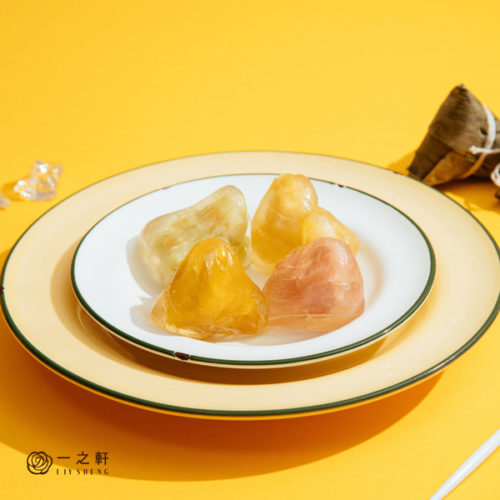
Contemporary zongzi
Convenience stores such as 7/11 and larger supermarkets provide a year-round supply of zongzi, while other chains such as Ijysheng and Starbucks have adapted the seasonal delicacy with fruit and even bubble tea-flavored “icy” zongzi. Enjoyed cold, these have translucent outer rice shells with soft and sweet fillings.
Whether one craves a cooling sweet treat such as these, or a warm and hearty meal, there is a zongzi for all occasions.

